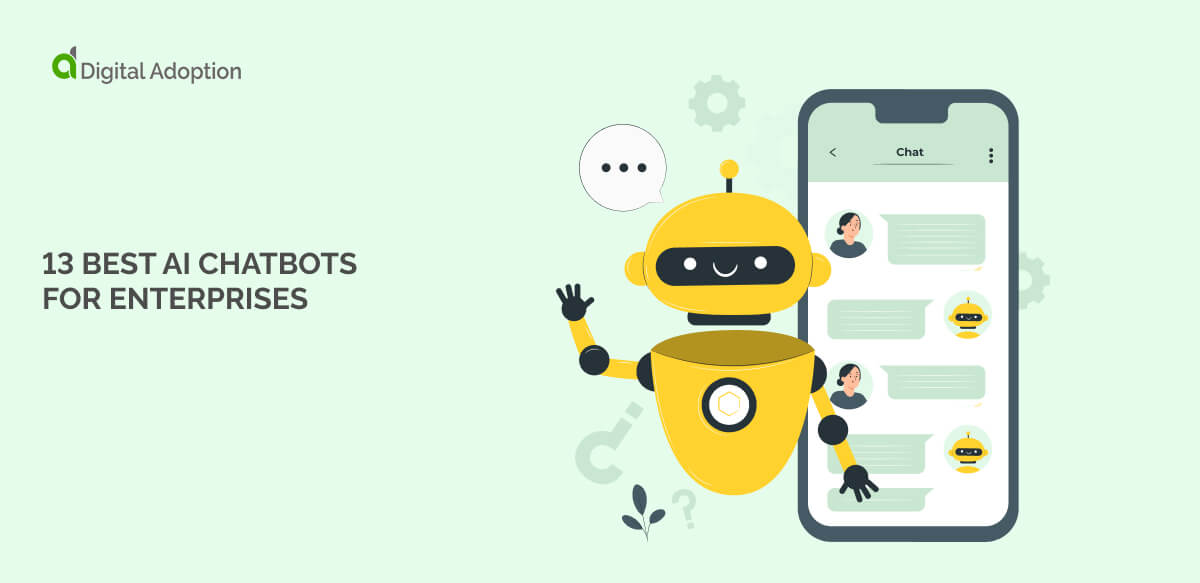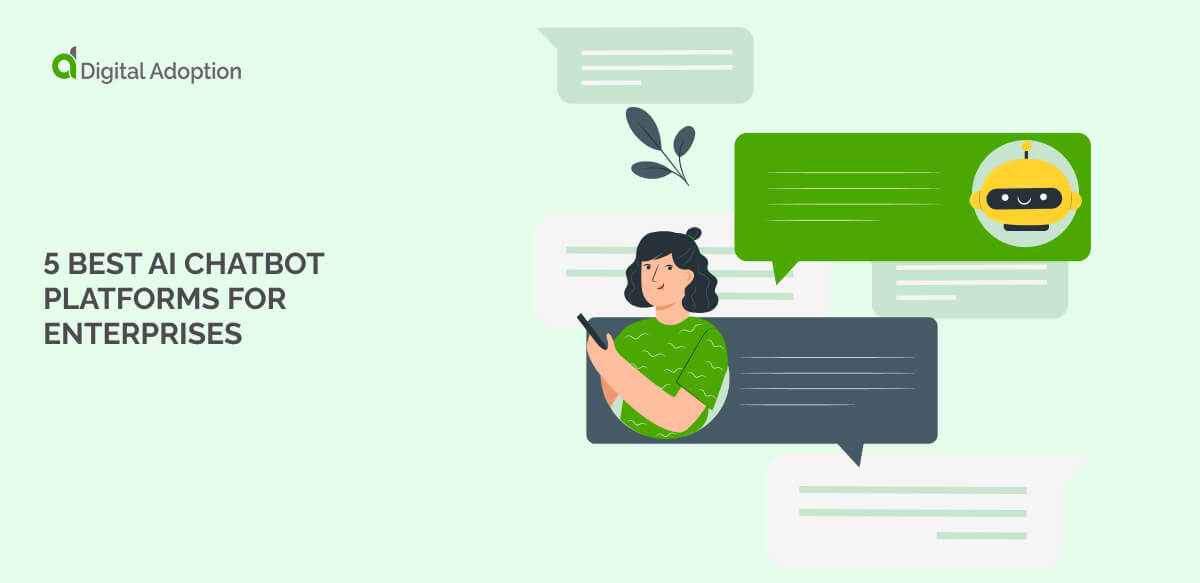You might feel left out if you don’t have a digital assistant.
That’s because organizations that use them save time in IT cost optimization efforts. They also enhance the digital employee experience by solving common issues efficiently.
A digital assistant (or virtual assistant) is a technology that can complete simple tasks. It can also answer questions or guide confused users. It bridges the gap in human support by solving common or basic problems. It saves time, reduces costs, and enhances user experiences, often as part of an AI-driven digital transformation.
This article explains what a digital assistant is. We clarify what digital assistants can do, the types currently available, how you can use them, and popular examples. After reading it, you will know whether you need one and what type suits your needs.
Examples of popular digital assistants
Several examples of digital assistants exist, but the five tools below are all examples of enterprise technology. They will all suit various enterprise applications.
Enterprise digital assistants include:
IBM Watsonx Assistant
IBM Watsonx Assistant interacts with users using advanced AI, natural language understanding (NLU), and machine learning. Organizations can deploy it across multiple channels to provide customer support and automate tasks.
Enterprise features of IBM Watson Assistant include:
- Multi-channel support: Seamless integration with web, mobile, and messaging platforms.
- Customizability: Allows businesses to tailor the assistant to their specific needs.
- Analytics: Provides detailed performance tracking and insights.
IBM Watson Assistant is highly scalable and customizable, fitting diverse enterprise needs. However, to maximize effectiveness, significant initial setup and training are required.
Microsoft Power Virtual Agents
Microsoft Power Virtual Agents on Azure enables businesses to build chatbots using a no-code/low-code interface. It integrates with Microsoft 365 and Dynamics 365, allowing for streamlined automation and support.
Enterprise features of Microsoft Power Virtual Agents include:
- No-code Interface: Easy bot creation without needing deep technical skills.
- Integration with Microsoft Products: Seamless integration with Microsoft 365, Dynamics 365, and other Power Platform services.
- AI-driven Insights: Provides analytics and AI-driven insights to improve performance.
Microsoft Power Virtual Agents is user-friendly and integrates well with existing Microsoft ecosystems. However, it is limited to Microsoft environments, which may restrict flexibility for some enterprises.
Salesforce Einstein Bots
Salesforce Einstein Bots leverage AI and natural language processing to handle customer inquiries and automate tasks within the Salesforce ecosystem.
Enterprise features of Salesforce Einstein Bots include:
- CRM Integration: Direct integration with Salesforce CRM for seamless customer data access.
- Pre-built Templates: Offers templates for common use cases to speed up deployment.
- Real-time data access: Provides real-time updates and data handling within the Salesforce platform.
Salesforce Einstein Bots enhance customer service efficiency within the Salesforce environment. This assistant is best for businesses already using Salesforce, limiting broader applicability.
Oracle Digital Assistant
Oracle Digital Assistant uses AI and machine learning to provide contextual responses and automate workflows. It integrates with Oracle Cloud and other enterprise systems.
Enterprise features of Oracle Digital Assistant include:
- Pre-built skills: Skills include Oracle applications like ERP, HCM, and CX.
- Multi-channel deployment: Supports deployment across web, mobile, and messaging platforms.
- Multilingual support: Offers support for multiple languages to cater to global enterprises.
Oracle Digital Assistant offers deep integration with Oracle’s suite of enterprise applications.
However, like Salesforce Einstein Bots, Oracle Digital Assistant’s benefits are less significant for non-Oracle-focused organizations.
SAP Conversational AI
SAP Conversational AI employs natural language processing and machine learning to build and manage chatbots. It integrates with SAP’s enterprise solutions to enhance productivity and support.
Enterprise features of Oracle Digital Assistant include:
- Integration with SAP solutions: Seamlessly connects with SAP ERP, C/4HANA, and other enterprise systems.
- Low-code bot building: Allows creation of chatbots with minimal coding required.
- Performance analytics: Offers detailed analytics and performance metrics.
SAP Conversational AI optimizes workflows and support within the SAP ecosystem. Its design suits SAP environments. The design limits its use outside the SAP ecosystem.
Examine this list of examples of digital assistants. Ensure you invest in the right tool for your needs.
Types of digital assistants
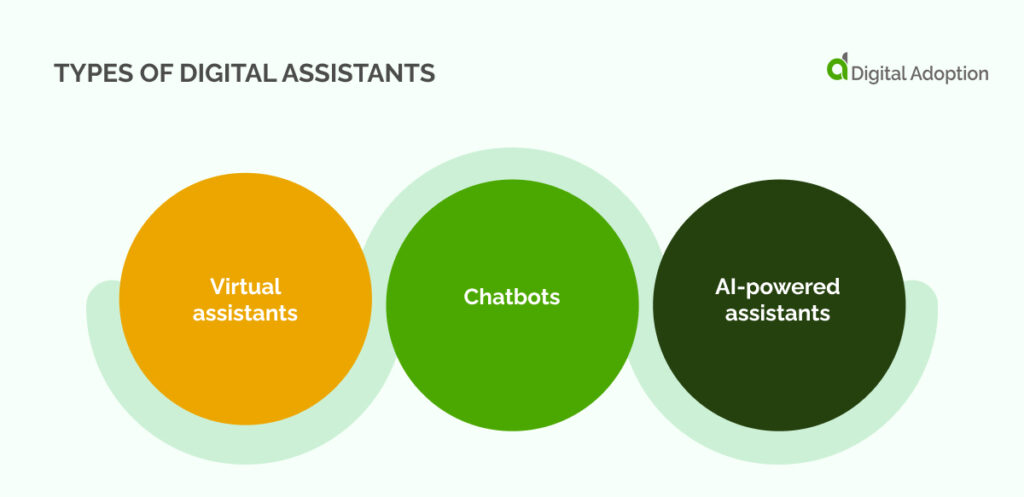
There are three main types of digital assistants. Before investing, consider each one and how it might align with your needs.
Virtual assistants
Virtual personal assistants, like Microsoft’s Cortana or Samsung’s Bixby, offer assistance personalized to the user’s needs. They manage schedules, set reminders, send messages, and can often integrate with many other applications for a seamless workflow.
They use AI to learn user preferences and habits, enhancing productivity and offering a tailored, efficient user experience across various devices and platforms.
Chatbots
Chatbots, such as those integrated into customer service websites or messaging apps like Facebook Messenger, provide text-based interactions. They handle customer inquiries, offer product information, and can assist with troubleshooting.
Chatbots use natural language processing. They use this technique to understand and respond to user inputs. This process streamlines customer support and engagement. OpenAI’s ChatGPT, MS Cortana, and Google Gemini are all examples of chatbots.
AI-powered assistants
AI-powered assistants use machine learning (ML) and natural language processing (NLP. They use these techniques to understand and respond to users’ requests. They are intelligent because they can learn from user interactions. They also adapt to user preferences and improve accuracy over time.
These assistants enhance productivity and provide personalized support. They can also streamline tasks, making daily activities more efficient and user-friendly. ChatGPT uses AI to power its digital assistant capabilities.
Consider these three digital assistant types and choose the best one for your needs to ensure ROI.
What do digital assistants offer?
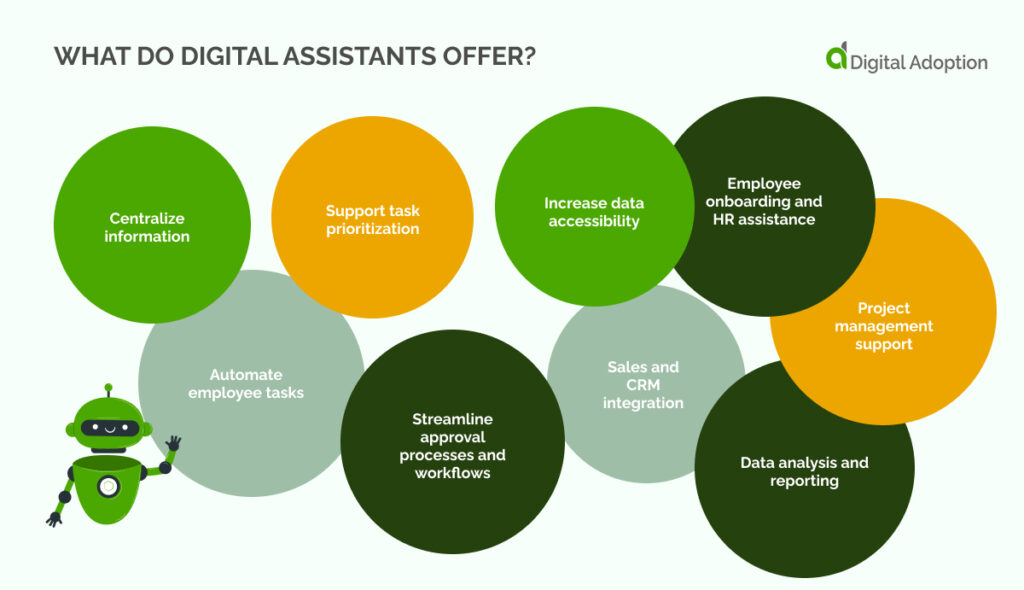
Before you invest in a digital assistant, you’ll need to know what they can do. Then you’ll know if they will work for you and increase efficiency.
The list of tasks a digital assistant can do includes:
Centralize information
A digital assistant centralizes information. It aggregates data from diverse sources such as databases, documents, and APIs.
It offers a unified interface where users can access crucial information swiftly and efficiently. This approach reduces the time spent searching multiple platforms and ensures consistency in data retrieval across the organization.
Support task prioritization
Digital assistants aid in task prioritization. They evaluate the urgency and importance of tasks.
Digital assistants analyze deadlines, dependencies, and user preferences to help users focus on high-priority activities. They can also be useful productivity software.
It optimizes time management and employee productivity. This process ensures that critical tasks receive appropriate attention, enhancing overall efficiency and team goal achievement.
Automate employee tasks
Automating repetitive tasks is a hallmark of digital assistants.
They free employees from mundane activities. These activities include data entry, scheduling meetings, or updating records.
By handling routine tasks, assistants allow employees to concentrate on more complex and value-added responsibilities. This process boosts productivity. It also increases job satisfaction while reducing operational costs.
Increase data accessibility
Real-time data access is crucial for digital assistants, ensuring they provide accurate and timely information to users.
By integrating with data sources and APIs, assistants swiftly retrieve up-to-date information, enhancing decision-making processes and operational efficiency. This capability ensures users have reliable access to the latest data insights, improving overall organizational agility and responsiveness.
Streamline approval processes and workflows
Digital assistants streamline approval workflows by automating routing, notifying stakeholders, and tracking progress.
They facilitate faster decision-making and reduce bottlenecks in processes like expense approvals, purchase orders, or document reviews. By preemptively addressing potential delays or issues, assistants enhance operational efficiency and ensure smoother workflow management across departments.
Employee onboarding and HR assistance
Digital assistants streamline digital employee onboarding by guiding new hires through paperwork, policy reviews, and benefits enrollment.
They assist with common HR queries, provide information on company policies, and facilitate smoother integration into the organization. ChatGPT prompts for HR contain a helpful list of ways HR teams can use ChatGPT as a digital assistant. When they automate administrative tasks, assistants enhance HR efficiency and improve employee satisfaction during the critical onboarding phase.
Sales and CRM integration
Digital assistants support sales teams by managing leads, tracking pipelines, retrieving customer information, and automating follow-up actions.
They integrate seamlessly with CRM systems. This allows them to enhance sales processes, improve customer relationship management, and ensure timely engagement with prospects.
This approach boosts sales team productivity and effectively nurtures customer relationships throughout the sales lifecycle.
Project management support
Digital assistants can benefit project management. These tools facilitate project planning, assign tasks, track progress, and send milestone reminders.
They enhance team collaboration. They achieve this by centralizing project-related communications and documentation/ Doing so ensures aligned project goals and timelines.
This feature helps teams stay organized, meet deadlines, and achieve project milestones within budget constraints.
Data analysis and reporting
Digital assistants contribute to data analysis and reporting. They generate reports, analyze data trends, and provide actionable insights. They also assist in decision-making by presenting data-driven recommendations based on real-time analytics. This approach allows them to support strategic initiatives and business intelligence efforts.
The data analysis and reporting feature enables organizations to leverage data effectively. They can engage in data-driven decision-making to unlock competitive advantage in the marketplace.
Digital assistant use cases
Enterprises can leverage digital assistants for various purposes. They can enhance efficiency, streamline operations, and improve customer service.
When AI and machine learning drive digital assistants, they can handle mundane tasks, freeing human employees for more complex activities.
Customer service
Digital assistants can provide 24/7 customer support, handle routine inquiries, resolve common issues, and escalate complex problems to human agents. Organizations using them in this way reduce wait times and improve customer satisfaction.
You can also ensure consistent, reliable service, enhancing the overall customer experience and brand loyalty. This approach will lead to satisfied customers who continue to purchase products and use your services.
Employee assistance
Internally, digital assistants help employees by managing schedules, setting reminders, and providing quick access to information. They can complete simple tasks like answering questions, assisting with HR queries, and streamlining workflow. This approach increases productivity and allows staff to focus on strategic, high-value tasks that require human expertise.
Data management
Digital assistants assist in data entry, retrieval, and analysis. They pull reports faster than human staff could hope to achieve, analyze trends, and provide actionable insights. This implementation aids in informed decision-making, ensures data accuracy, reduces manual effort, and enables businesses to harness the full potential of their data resources.
Automating routine tasks
Digital assistants can automate booking meetings, sending follow-up emails, and processing orders. This approach reduces the risk of human error, ensures staff can tick off tasks promptly, and frees employees to concentrate on more critical and innovative aspects of their roles that drive innovation and growth.
Systems integration
Digital assistants integrate with various enterprise systems, such as CRM and ERP, providing seamless access to information across different platforms. This integration improves workflow efficiency, enables real-time data sharing, enhances collaboration, and supports a cohesive and integrated approach to efficient business operations.
Inventory management
Digital assistants monitor stock levels, place reorder requests, and track inventory movements. When you take this approach, you receive the reward of optimal stock levels, reduce the risk of overstocking or stockouts, and streamline your inventory management, reducing waste and saving resources for the organization.
Scheduling
Digital assistants manage appointments, meetings, and reminders for employees. They help maintain organized schedules, reduce the likelihood of conflicts, and increase overall productivity by ensuring that employees can focus on their tasks without worrying about calendar management.
Training and onboarding
Digital assistants provide new employees with the information, resources, and training materials they need to quickly settle in and gain knowledge.
Leveraging digital assistants in this way accelerates the onboarding process, ensures consistent training, and helps new hires become more productive, enhancing their integration into the organization and overall employee satisfaction.
Financial tasks
Digital assistants handle tasks such as processing invoices, managing expense reports, and executing routine financial transactions. This approach improves accuracy, speeds up financial processes, reduces manual workload, and ensures compliance with financial regulations, ultimately enhancing overall economic efficiency.
As you can see from the ways you can use digital assistants above, they help enterprises save time, reduce costs, and enhance employee and customer experiences.
Consider your needs before investing in a digital assistant
Before investing in a digital assistant, assess your specific needs.
First, identify tasks you need to automate. Next, consider integration requirements with existing systems. Also include preferred communication channels (voice, text) and desired features.
Compare your list of needs to what specific digital assistants can do.
For example, Salesforce Einstein Bots is great for companies that use Salesforce. But it has limited potential for companies that don’t. Compare the digital assistant budget to your budget. Invest in a digital assistant when you are sure it meets your needs.
A well-suited digital assistant can enhance efficiency and productivity, while a poor match might lead to frustration and wasted resources. Invest in the right digital assistant to maximize efficiency and increase revenue.

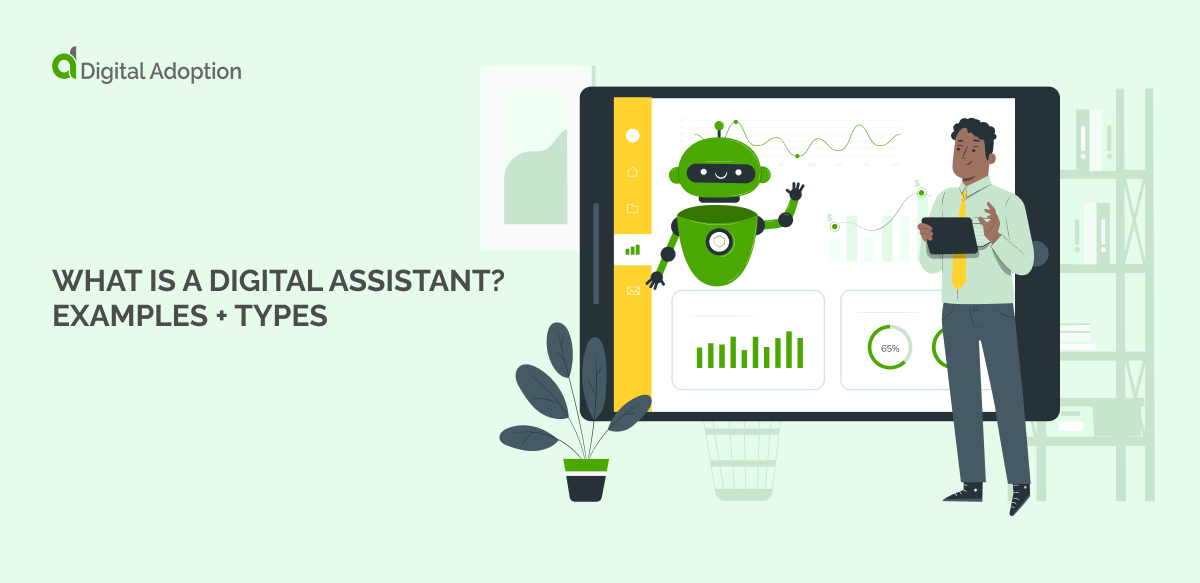


![4 Best AI Chatbots for eCommerce [2025]](https://www.digital-adoption.com/wp-content/uploads/2025/03/4-Best-AI-Chatbots-for-eCommerce-2025-img-300x146.jpg)
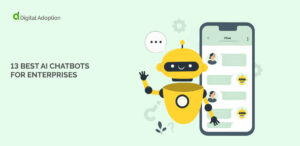

![13 Digital Transformation Enablers [2025]](https://www.digital-adoption.com/wp-content/uploads/2025/02/13-Digital-Transformation-Enablers-2025-img-300x146.jpg)

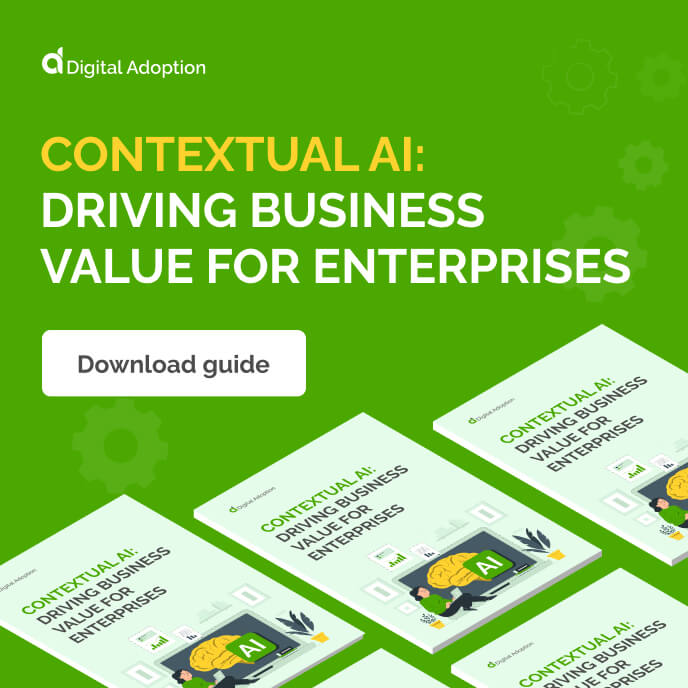

![4 Best AI Chatbots for eCommerce [2025]](https://www.digital-adoption.com/wp-content/uploads/2025/03/4-Best-AI-Chatbots-for-eCommerce-2025-img.jpg)
